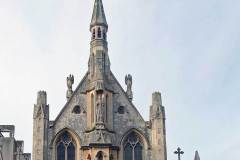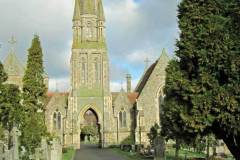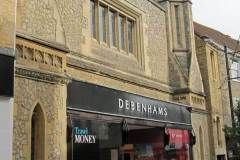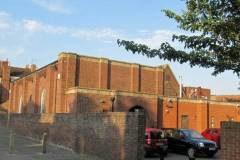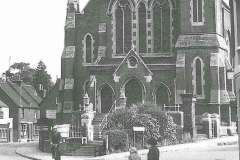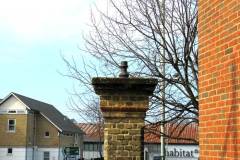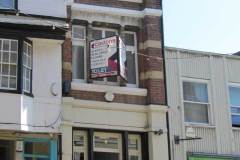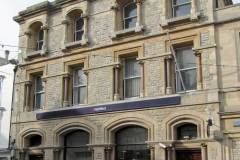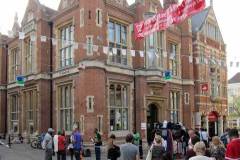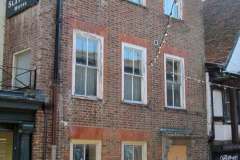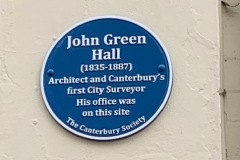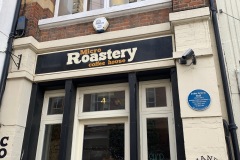(1835-1887) Architect
Born in 1835 in Hampshire, John started in his teens as a cabinet maker, working for his father Thomas Hall. But his career aspirations lay elsewhere. He studied for the Royal Institute of British Architects exams and by his early 30s was managing clerk at the Winchester practice of John Colson, a successful church architect. John was also active as a non-commissioned officer in the 1st Hants Volunteers. His big break came in 1866, when he, along with 30 other hopefuls, was interviewed for the post of Canterbury city surveyor, advertised with a salary of £150 pa. John, just 31 years old, was successful, and spent the next two decades making his mark on the Canterbury street scene.
Images on this page show examples of his work:
- the Roman Catholic church in Burgate (1875) (Image 1)
- the city cemetery chapels (1877) (Image 2)
- the Congregational church in Guildhall Street, now part of Debenhams (1877) (Image 3)
- the Masonic Temple in St Peter’s Street (1880) (Image 4)
- the Presbyterian church near Canterbury East railway station (Image 5), erected in 1881 but demolished to make way for the city ring road – all that remains is one gate post in the station approach (Image 6)
- his architect’s office at 4 St Margaret’s Street (1882) – large upper windows for maximum light (Image 7)
- what is now Westminster bank in The Parade (1885) (Image 8)
- Santander bank in High Street (Image 9) – originally Pool’s boot makers (1887 designed by Cowell and Bromley but John Cowell had served as John Hall’s pupil) – Their shop front obligingly offered two doors on to the High Street – one for men and the other for women!
- his most prestigious work, completed in 1888 after his early death in 1887, the building that since 1918 has been Lloyds bank (Image 9)
The architect lived in St Margaret’s Street (Image 10) a few doors down from his office This list of successful projects omits one of John’s most appreciated contributions – sorting out the city’s sewage system that was clearly falling apart at the time of his appointment.
The range and quality of these buildings is impressive. Clever use of style, building materials (Bath stone, rag stone and brick) and a liberal sprinkling of spires and pinnacles all added to the appeal. John Hall died an early death (52 years old) in London following surgery there. His remains were brought back to Canterbury cemetery, where in May 1887 he was buried close to the cemetery chapel he had designed just a decade before. I’ve looked hard for any signs of his memorial stone (in block E), but can find nothing. Perhaps others can succeed where I have failed – surely the indefatigable John Green Hall at least deserves a well-marked resting place? John Cowell, his former pupil, died the following year, aged just 33 years, a victim of typhoid, leaving a widow and four young children.
Sources: Cantacuzino (1970); also Kent Messenger Group (1997) for image of St Andrew’s church
DL
2024 Update. In March 2024 the Canterbury Society unveiled a blue plaque commemorating the life and work of John Green Hall. The plaque can be viewed at St Margaret’s Street at the site of his former office (images 11 and 12)
IO

